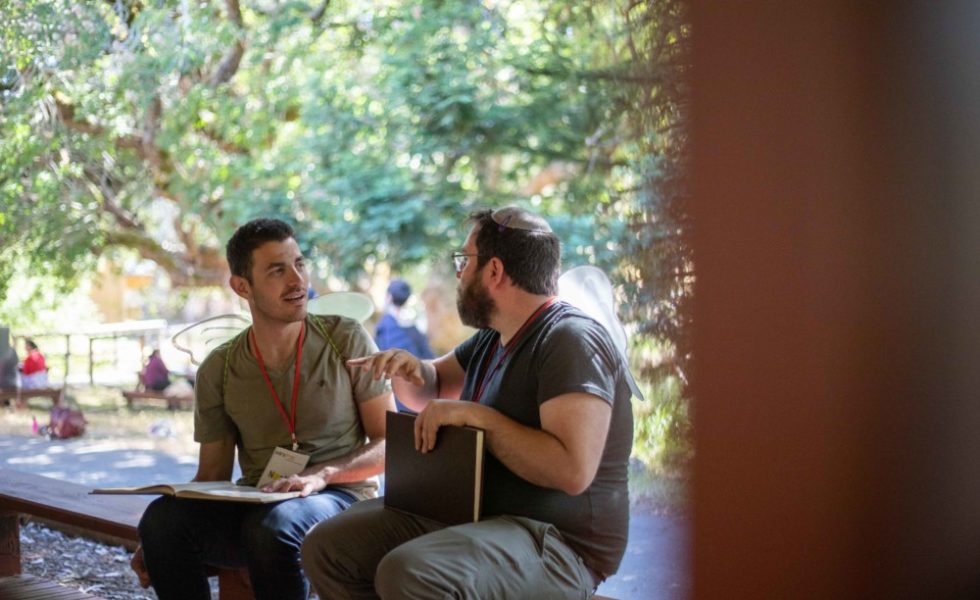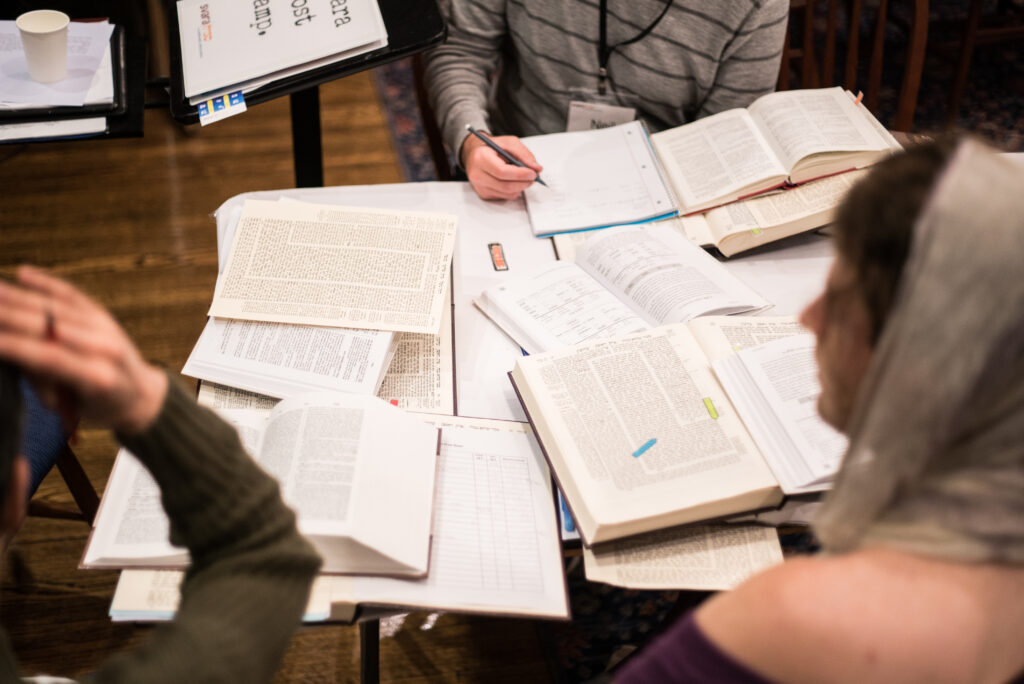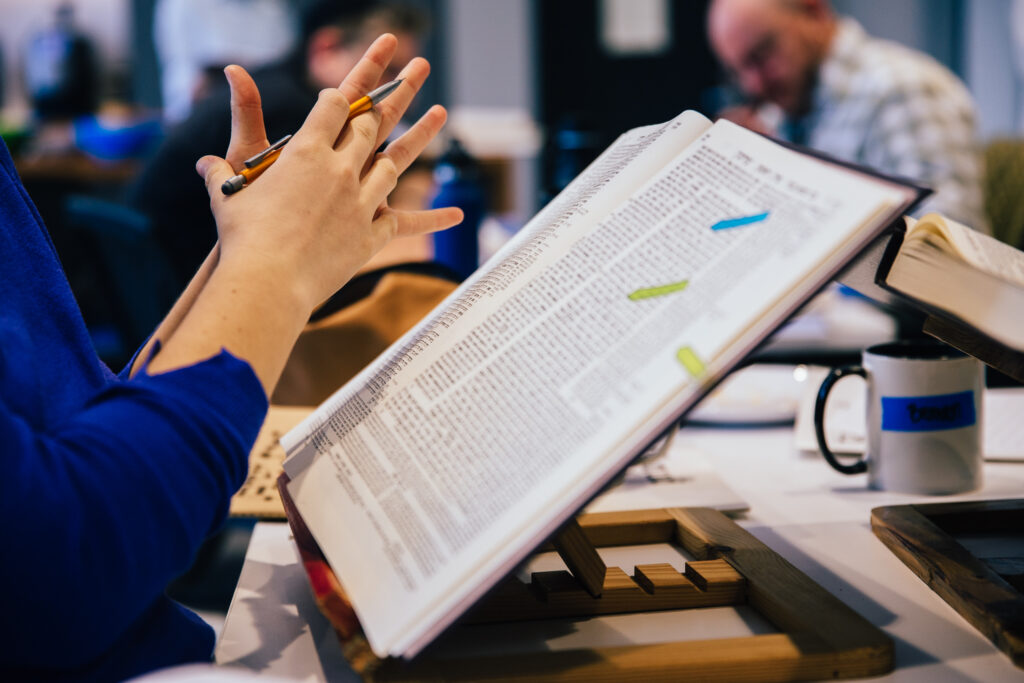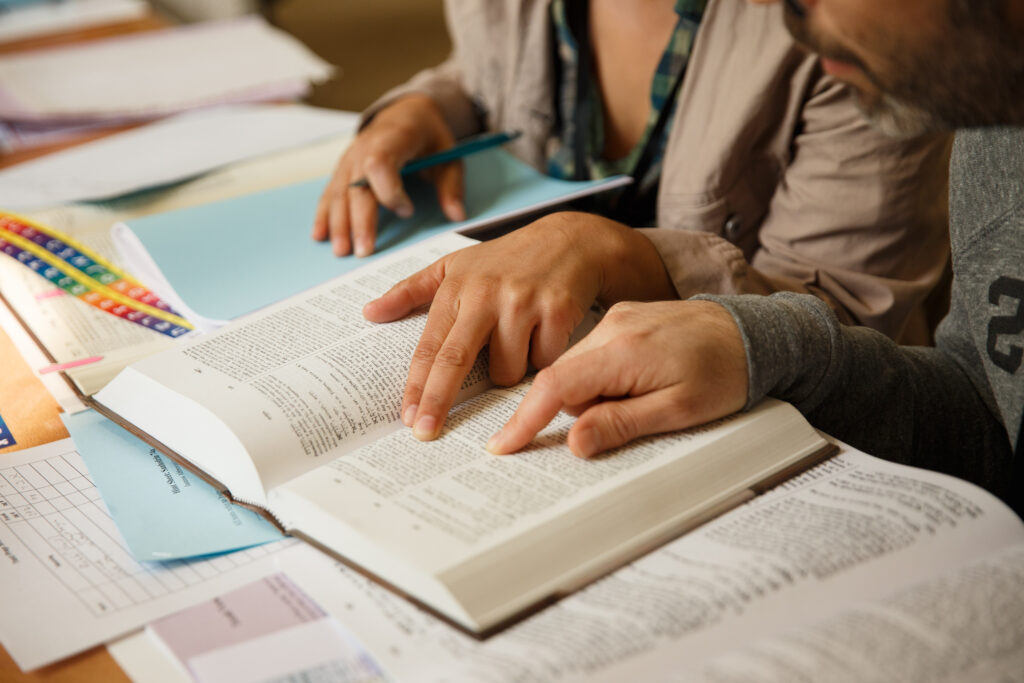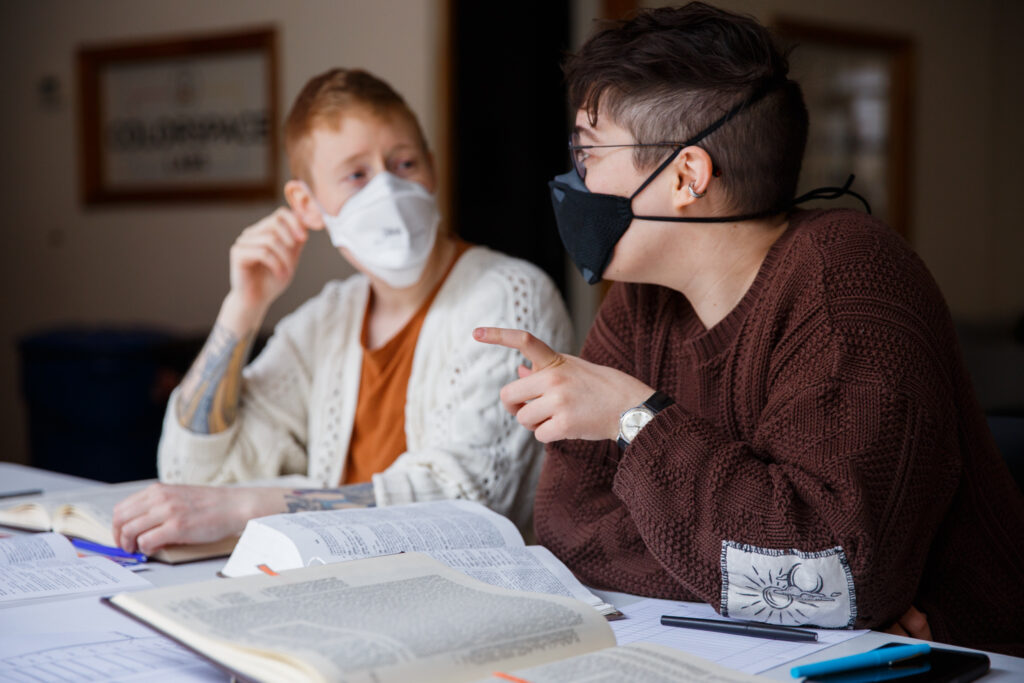When my grandma Lily was dying, she traveled through time back to her childhood. Lily survived the Holocaust, as well as years of hiding, fleeing, loss, illness, pain, and relocation in mid-life. The grandmother I knew in old age was stiffened by scar tissue. She struggled with my trans and non-binary gender identity and my vocation as a rabbi. She misgendered me and didn’t understand why I would take out student loans to spend five expensive years in graduate school to become something as shtetl-y as a rabbi, when the same amount of education could have made me a doctor or a lawyer.
In her dying days, all that melted away. I arrived at the hospital with my service dog Rudy, and together, we traveled through time from Anaheim in 2011 to Gilly, Belgium in the 1920s. In Lily’s mind, she was a small child, untouched by war and I was her beloved father, Yisroel, who was also a rabbi. She believed that Rudy was the puppy she had begged for as a child. “Tatti,” she said, holding him close, “will mama let me keep it?”
“Bubleh,” I answered honestly, thinking about my great-grandmother who died in the 1950s, “I can’t imagine she will object.”
It’s not unusual to time travel like this at the end. Many of the people I have accompanied in their last days return to days past. Dead loved ones fill the room, childhood homes reassemble from the ashes of memory, and exiled parts of the self reanimate. Time collapses in these moments into something more sacred than the day to day. I have come to believe that this phenomenon is a mercy that helps us let go of living. After all, it is only from the limited perspective of life on this planet that time is linear. When we look to the stars we are gazing into the past, and when the stars look at us they are seeing our future. Perhaps as we enter eternity our perspective also becomes more eternal?
In the Talmud, we come upon the remarkable phrase “There is no early or late in the Torah” (Pesahim 6b). In the Rabbis’ imagination, King David can chat with Moses, and the laws of keeping Kosher (given to Moses at Mount Sinai) influence how Noah ate in the ark many generations earlier. In one science-fiction-like passage of Talmud (Menahot 29b), Moses goes to learn Torah in the study house of Rabbi Akiva and does not understand the layers of interpretation that have been added to the Torah in the many generations in between their lifetimes. Rabbi Akiva reassures Moses that the Torah he is teaching is the same Torah Moses himself brought down from Mount Sinai that has grown more elaborate through time.
Last week, in my “Cripping the Torah” class my students explored how Torah time is similar to Crip Time. In a landmark essay on the disabled experience of time, Ellen Samuels describes six ways that disabled people experience “crip time” in ways that are non-linear.1 Samuels both celebrates the beauty of crip time and laments the ways that being exiled from normative time can be painful. “Crip time is time travel,” writes Samuels:
Some of us contend with the impairments of old age while still young; some of us are treated like children no matter how old we get. The medical language of illness tries to reimpose the linear, speaking in terms of the chronic, the progressive, and the terminal, of relapses and stages. But we who occupy the bodies of crip time know that we are never linear, and we rage silently—or not so silently—at the calm straightforwardness of those who live in the sheltered space of normative time. (2015)
As my students highlighted, while disability and illness pull us out of normative time, crip time is not simply looser. Crip time can occasionally demand exacting attention to the needs of the bodymind that can be hard for able-bodied people to understand. When I got very sick in my thirties I grieved the loss of normative time. I could no longer count on my body to be able to get out of bed each day and I mourned being able to imagine my life as a linear progression of stages and achievements. I also lamented the loss of being able to be casual about things like meals running late or missing a nap. However, it was also profoundly liberating to let go of the heaviness of constantly holding onto hope for the future and begin to live in the more emergent and mindful unfolding of crip time.
Queer theorist Judith (Jack) Halberstam notes that queer time, like crip time, is less linear. In their 2005 book In a Queer Time and Place, Halberstam argues that “queer uses of time and space develop… in opposition to the institutions of family, heterosexuality, and reproduction.”2 Queer identity is formed by time-warping experiences like coming out, gender transitions, and generation-defining tragedies such as the AIDS epidemic.
Learning Torah at SVARA in a queer bet midrash and especially, with my students and fairies in our crip class, is a unique opportunity to inhabit sacred non-linear time. Like the Sages of the Talmud, we have been exiled from mainstream society, and along with this painful exile comes freedom from normative notions of the clock. The Torah that we are able to nourish as queer, disabled learners was both present at Sinai and, simultaneously, has never existed before.
The time I spent with my grandmother at her death was the first time she used male language for me or really saw me as a rabbi. It was also the first time I glimpsed a side of my family unravaged by trauma and war. It was profoundly healing for my relationship with my grandmother. It also helped me break intergenerational patterns.
The wounds that were healed by embodying my great-grandfather in those days softened the hardened scars that I had inherited; including wounds that came from my great-grandfather himself. Like Moses, learning his own Torah from Rabbi Akiva, my own ancestor came to me through my grandmother’s memories, to help me heal my ancestral trauma. Likewise, when we study Torah as queers and crips, and queer crips, our ancestors might show up for us through the text to help us heal from the ways they themselves injured us by callousness or exclusion. There is no early or late in the sacred; there is only the chronology of the heart.
1 Samuels, E. (2017). Six ways of looking at Crip Time. Disability Studies Quarterly, 37(3). https://doi.org/10.18061/dsq.v37i3.5824
2 Halberstam, J. (2005). In a queer time and place: Transgender Bodies, subcultural lives. New York Univ. Press.

